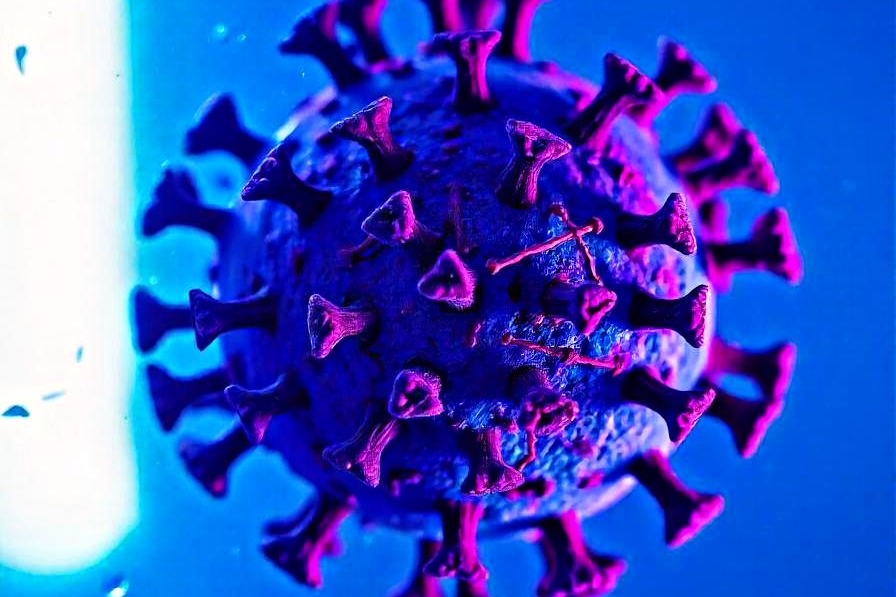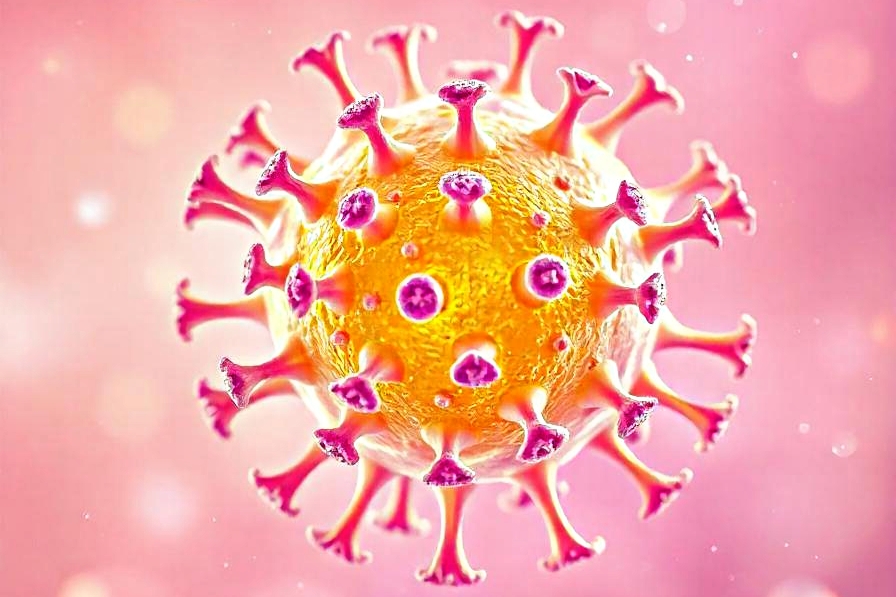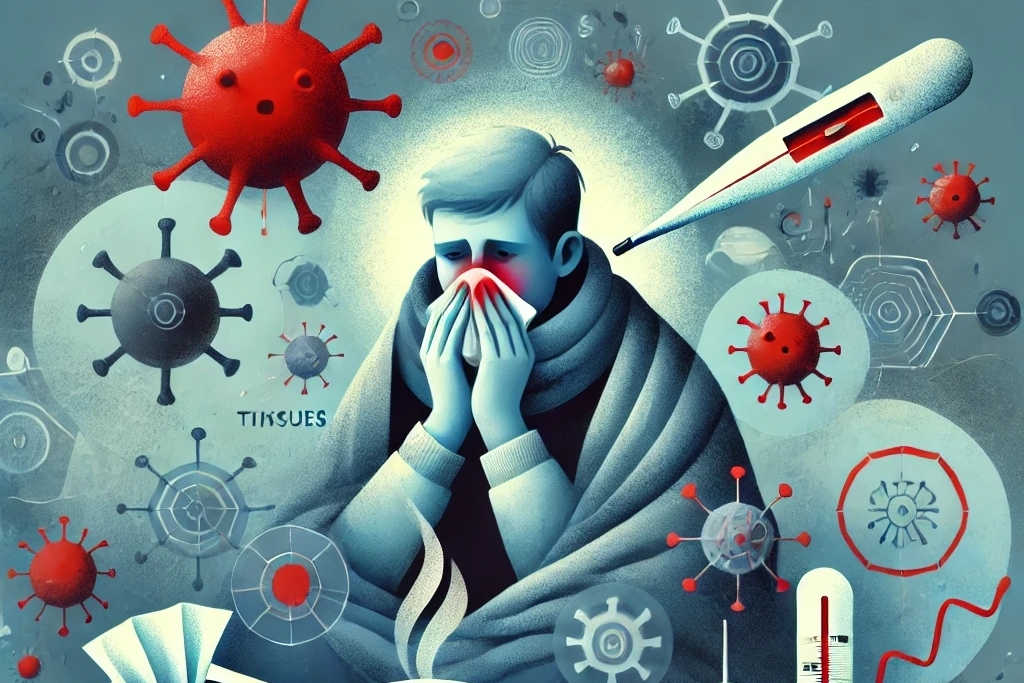The common cold is one of the most prevalent illnesses worldwide, affecting billions of people each year. Despite its ubiquity, the cold virus remains a fascinating topic for study due to its complexity, diversity, and resilience. This article takes a closer look at the cold virus, its causes, symptoms, transmission, treatments, and strategies for prevention.
What Is the Cold Virus?
The “cold virus” is a general term that encompasses several types of viruses responsible for causing the common cold. The most well-known and frequently encountered are rhinoviruses, which account for up to 50% of cold cases. Other viruses include coronaviruses (distinct from SARS-CoV-2), adenoviruses, respiratory syncytial virus (RSV), and parainfluenza viruses.
Cold viruses primarily target the upper respiratory tract, causing inflammation in the nose, throat, and sinuses. While colds are typically mild and self-limiting, they can lead to complications in vulnerable populations, such as infants, the elderly, and individuals with weakened immune systems.
Types of Cold Viruses

- Rhinoviruses
- Responsible for the majority of cold cases.
- Thrive in the cooler temperatures of the nasal passages.
- Over 160 known strains make immunity to rhinoviruses elusive.
- Coronaviruses
- A small percentage of colds are caused by coronaviruses (not to be confused with COVID-19-causing SARS-CoV-2).
- Known for causing seasonal outbreaks.
- Adenoviruses
- Can cause cold-like symptoms as well as conjunctivitis and gastrointestinal issues.
- More severe in immunocompromised individuals.
- Respiratory Syncytial Virus (RSV)
- Particularly dangerous for young children and older adults.
- Can lead to bronchiolitis and pneumonia in severe cases.
- Parainfluenza Viruses
- Can cause colds and more serious respiratory illnesses like croup.
How the Cold Virus Spreads

Cold viruses are highly contagious and spread through multiple pathways:
1. Airborne Transmission
- Infected individuals release virus-laden droplets into the air when they cough, sneeze, or talk.
- These droplets can be inhaled by others, leading to infection.
2. Surface Contamination
- Viruses can survive on surfaces such as doorknobs, phones, and keyboards for several hours.
- Touching contaminated surfaces and then the face introduces the virus to mucous membranes.
3. Direct Contact
- Close contact, such as handshakes, can transfer the virus from one person to another.
Symptoms of a Cold Virus Infection

The symptoms of a cold virus infection typically develop within 1-3 days of exposure. These symptoms can vary in severity but commonly include:
- Nasal Congestion: Blocked or runny nose is the hallmark of a cold.
- Sneezing: A reflex to expel irritants from the nasal passages.
- Sore Throat: Caused by inflammation in the throat.
- Cough: Can be dry or accompanied by mucus.
- Mild Fever: More common in children than adults.
- Fatigue and Weakness: Resulting from the body’s immune response.
- Watery Eyes: Caused by inflammation of the tear ducts.
- Headache and Body Aches: Due to sinus pressure and the immune system’s efforts to fight the virus.
Symptoms usually peak around the second or third day and subside within 7-10 days. In some cases, a lingering cough or nasal congestion may persist for weeks.
How the Body Fights the Cold Virus
When the cold virus enters the body, the immune system springs into action to eliminate it:
- Initial Response
- White blood cells recognize the virus as foreign and release inflammatory chemicals to combat it.
- These chemicals, like histamines, cause symptoms such as a runny nose and sneezing.
- Antibody Production
- The immune system creates specific antibodies to target the invading virus.
- Memory Cells
- After recovery, the immune system retains memory cells for the specific virus strain, offering partial protection against future infections.
- However, due to the wide variety of cold viruses, complete immunity is impossible.
Complications of Cold Virus Infections

While the common cold is usually harmless, it can lead to complications, especially in high-risk individuals:
- Sinus Infections (Sinusitis):
- Viral or secondary bacterial infections of the sinuses.
- Ear Infections:
- Fluid buildup in the middle ear can lead to pain and infection.
- Asthma Exacerbations:
- Colds can trigger asthma attacks or worsen symptoms.
- Bronchitis:
- Persistent coughing may evolve into bronchitis, particularly in smokers or those with chronic respiratory conditions.
- Pneumonia:
- Rare but severe, often affecting those with weakened immune systems.
Treating Cold Virus Infections
There is no cure for the common cold, as antibiotics are ineffective against viruses. Treatment focuses on symptom relief and supporting the body’s natural recovery process.
1. Over-the-Counter Medications
- Decongestants: Reduce nasal swelling.
- Pain Relievers: Alleviate headaches and body aches (e.g., acetaminophen, ibuprofen).
- Antihistamines: Relieve runny nose and sneezing.
- Cough Suppressants: Help manage persistent coughs.
2. Home Remedies
- Stay hydrated to thin mucus and prevent dehydration.
- Rest to allow the body to focus on recovery.
- Use saline nasal sprays or rinses to clear nasal passages.
- Gargle with salt water to soothe a sore throat.
3. When to See a Doctor
- Symptoms persist for more than 10 days.
- High fever or severe pain develops.
- Breathing difficulties occur.
Preventing Cold Virus Infections
Preventive measures can significantly reduce the risk of catching or spreading the cold virus.
1. Hygiene Practices
- Wash hands frequently with soap and water for at least 20 seconds.
- Avoid touching the face, especially the eyes, nose, and mouth.
- Disinfect high-touch surfaces regularly.
2. Boosting Immunity
- Eat a diet rich in fruits, vegetables, and whole grains.
- Stay physically active and get adequate sleep.
- Manage stress levels, as chronic stress can weaken the immune system.
3. Vaccination and Prophylactics
- While no vaccine exists for the common cold, flu and RSV vaccines can reduce the burden of similar respiratory infections.
4. Social Measures
- Avoid close contact with sick individuals.
- Stay home when unwell to prevent spreading the virus.
Myths and Misconceptions About the Cold Virus

- “Cold Weather Causes Colds”:
- While colds are more common in winter, they are caused by viruses, not low temperatures.
- “Green Mucus Means Infection”:
- Green or yellow mucus is a normal immune response and doesn’t necessarily indicate a bacterial infection.
- “Vitamin C Prevents Colds”:
- While vitamin C may slightly reduce the duration of colds, it does not prevent them entirely.
- “Antibiotics Cure Colds”:
- Antibiotics are ineffective against viral infections like the common cold.
Advances in Cold Virus Research
Scientific advancements are gradually improving our understanding of the cold virus:
- Potential Vaccines:
- Researchers are exploring universal vaccines targeting common components of cold viruses.
- Antiviral Drugs:
- New medications aim to inhibit virus replication and reduce symptom severity.
- Genetic Studies:
- Mapping the genetic structure of cold viruses may lead to innovative treatments.
Final Thoughts
The cold virus is a formidable adversary due to its vast diversity and adaptability. While it may seem like a minor inconvenience, its economic and health impacts are far-reaching. By understanding its causes, symptoms, and preventive measures, we can better protect ourselves and reduce its spread.
Through ongoing research and public health efforts, we inch closer to managing the cold virus more effectively, ensuring healthier and more resilient communities.

